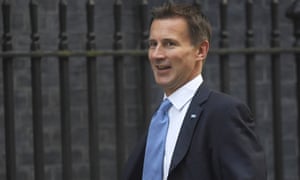In your report on the mayoral elections in Greater Manchester (Manchester mayor puts focus on homelessness, 9 May) you highlight the financial challenges facing the region, including that local authorities have undergone cuts of around £2bn since 2010. We have just completed a study of the impact of austerity on devolution and growth in Greater Manchester and we find that, in addition to local government cuts, the post-2015 welfare reforms will take almost £13bn from claimants in the region by 2020-21 as a result of benefit cuts and changes. This is the equivalent of £690 per working-age adult per annum. And there are other cuts which devolution has to manage, such as to adult skills and health and social care, where there is a £2bn funding gap.
Andy Burnham’s intention to prioritise homelessness is important and is to be welcomed, but to donate some of his salary to a new fund can send out the wrong message. It is austerity which is reinforcing social inequalities and homelessness in Manchester and elsewhere. We propose that Andy Burnham should argue for a different type of devolution model that is not about devolving austerity, but genuine local control over policies, finances and resources that will realistically address the economic and social problems of Manchester. We argue for a public services and investment case for addressing both growth and social disadvantage, which, combined with more local control over finances, will go some way to addressing not only homelessness, but also poverty and inequality.
Dr David Etherington Middlesex University
Professor Martin Jones Staffordshire University
• The concerns of Hartlepool residents at reductions in police numbers are well founded and regularly featured in over 430 community meetings I have attended in the area since my election in 2012 (Voices and votes, 9 May). The simple facts are that since 2010 the Cleveland area has lost £39m, or 36% of our policing budget, and the government, despite comments on ringfencing police spending, has taken another £1.2m off our grant settlement for this coming year (2017-18). We have implemented economies and efficiencies to maximise investment in neighbourhood policing, and to protect vulnerable people, but it is within a context of seven gruelling years of government-imposed austerity for communities like Hartlepool that impacts on the quality of life here.
Barry Coppinger
Police and Crime Commissioner for Cleveland
• While Polly Toynbee and David Walker are right to bemoan the cuts in services (Disparage, downgrade, downsize, G2, 9 May), surely the underlying issue is how to revive the local state – and in the process restore faith in building a fairer future? This means finding better ways of funding local services, rather than depending on unpredictable government grants. Most of the countries in the OECD do this by raising significantly more funding locally, from cities that cover much larger areas.
This can be achieved quite easily by reforming our anachronistic property rating system. Those with large land ownerships need to pay more, while small businesses, for example, should pay less. As a start councils can use parking charges to shift behaviour, as Nottingham has done in funding a third of the costs of its tram extensions through its workplace parking levy. Similarly, by building many more homes on public land, councils could plough the increases in land value back into improved local services, as Croydon, for example, is starting to do. People may no longer trust the national state to build utopia, but they will support measures that make sense locally.
Dr Nicholas Falk
Executive director, Urbed Trust
• Polly Toynbee and David Walker’s article on shrinking the state was right to mention evidence of rising child poverty. Our recent research shows that Britain has the third worst relative poverty of 21 developed countries, the fourth highest child mortality rate (CMR, 0-4 years) and an underfunded health service, as health expenditure fell from 9.4% of GDP in 2010 to 9.1% in 2015.
While CMR fell in every developed country, nine other nations had significantly bigger reductions than the UK, so we have an excess of child deaths. If we had the same CMR as Portugal, which previously had the highest rate, but which is now considerably lower than Britain, then we would have 1,300 fewer grieving parents. The link between relative poverty and CMR is again confirmed by our and other international research. Every parliamentary candidate should be asked what will they do to reverse relative poverty in Britain and perhaps match Portugal’s child mortality rate.
Professor Colin Pritchard
Bournemouth University
• It is government policy to reduce state spending, but billions of pounds of taxpayers’ money being channelled into private hands. Would a government really committed to lowering taxes and an economy based on free-market competition, spend £10bn a year to subsidise wages in private companies? Why would it be willing to give about £27bn a year to landlords, rather than imposing rent controls or building more homes? Why would it pay through the chancellor’s nose for private finance initiatives, now crippling NHS trusts? Plainly the government is only against state spending when it is on public services, not when it increases the private sector’s ability to make bigger profits.
Derek Heptinstall
Westgate-on-Sea, Kent
• Join the debate – email guardian.letters@theguardian.com
• Read more Guardian letters – click here to visit gu.com/letters
The high social cost of downsizing the state | Letters

